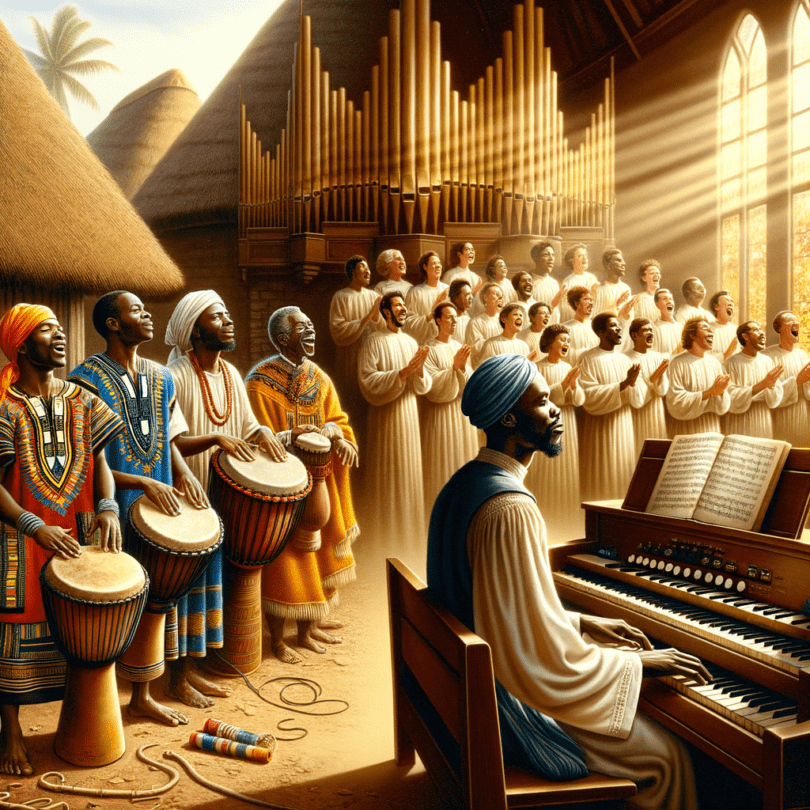Back in 1619, when the first enslaved Africans arrived in Virginia after being uprooted from their homeland, they were forced to leave behind everything they knew—except for their music and the deeply ingrained rhythms that came with it. These rhythms, an essential part of their cultural identity, crossed the Atlantic with them, shaping the way they faced a new and harsh world.
Many of these Africans came from societies where the language was tonal, meaning that the pitch or inflection with which a word was spoken altered its meaning. This likely contributed to the importance they placed on rhythm over melody. Their music became a vital means for expressing and understanding their shared experiences. For them, music wasn’t just a separate activity—it was woven into the fabric of everyday life, helping them communicate and find solidarity in their new, oppressive circumstances.
Over time, these rhythms found their way into work songs, field hollers, and street cries, often accompanied by dance. They developed and shared new musical forms, relying heavily on communal participation and the call-and-response style, where someone would sing a line and others would respond. This cultural tradition was a blend of African roots and adaptability to their new environment.
Research shows that this melding of African rhythms with Western musical influences eventually birthed important genres of African-American music, like spirituals and later, gospel songs. The noted anthropologist John Gibb St. Clair Drake highlights the complexities that arose when enslaved Africans encountered Christianity in the U.S., a religion laden with ideas of sin and an afterlife that were foreign to them. For many Africans, sin was something one could remedy with a simple sacrifice, not a complex moral dilemma.
As conflicting as these ideas were, they started to influence African-American religious practices. Christianity’s egalitarian message, contrasting sharply with the South’s pro-slavery interpretation, resonated especially in Northern churches. This sparked movements like the establishment of the African Methodist Episcopal Church by Absalom Jones and Richard Allen in 1787 after facing discrimination in a white church. This church became a sanctuary for spirituals—songs steeped in African musical tradition yet rich with Christian themes.
With the emancipation in 1863, African-Americans spread their musical legacy across the U.S. As they moved and settled in new areas, their music evolved. It wasn’t long before folks like George White from Fisk University helped bring these spirituals to a wider audience. In 1871, the Fisk Jubilee Singers toured to raise funds, formally introducing African-American spirituals to mainstream American culture. Songs such as these became foundational for later gospel music, with their messages of hope and resilience enduring through generations.
During the Great Migration at the start of the 20th century, when African-Americans flocked to the North, gospel music began to rise. This movement brought about shifts in religious consciousness, catalyzing new musical expressions. While some residents turned away from songs linked to plantation life, newcomers embraced vibrant camp meetings, and revivals filled with energetic “ring shouts” and other traditional forms.
The 1930s saw Thomas A. Dorsey, dubbed the father of gospel music, redefine the genre. After personal tragedy, he fused his blues background with spiritual themes, creating songs like “Take My Hand, Precious Lord.” His work solidified gospel’s place in churches, setting the stage for modern gospel choirs and inspiring future generations.
The advent of the Hammond organ in gospel music, first adopted by Northern Black churches in the 1930s, further enriched the genre. This instrument became a staple, offering a new dynamic range of sounds that enhanced sermons and praise.
Today, gospel music continues to evolve, drawing on deep-rooted traditions while inspiring countless musicians. It serves as a testament to both the resilience and creativity of the African-American community, carrying forward messages of hope, unity, and faith.

